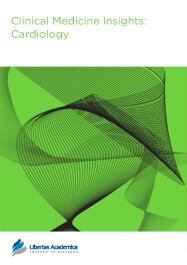

Publication Date: 20 Mar 2011
Type: Original Research
Journal: Clinical Medicine Insights: Cardiology
Citation: Clinical Medicine Insights: Cardiology 2011:5 35-40
doi: 10.4137/CMC.S6819

Aims: We evaluated the relationship between distribution of lesions in coronary tree and atherosclerotic renal artery stenosis (RAS).
Methods and results: Data collected prospectively on 500 consecutive patients who underwent simultaneous renal angiography following coronary angiography. Overall prevalence of RAS was 26.2% (131 patients). Significant (≥50% luminal diameter stenosis) RAS was present in 70 patients (14%). In 346 individuals of the study population, significant CAD was present (69.2%). Significant RAS was more common (18.4%) in this group. Older age, higher intra-arterial systolic blood pressure (SBP) and pulse pressure (PP) at the time of catheterization, and 3-vessel coronary artery disease (CAD) were associated with significant RAS in univariate analysis. Relationship between involved locations of coronary arteries [Left anterior descending (LAD), left circumflex (LCX), Right Coronary Artery (RCA), and their ostio-proximal portions] and RAS were significant except for left main (LM) disease. In multivariate model, age more than 62 years, SBP greater than 150 mmHg, PP in excess of 60 mmHg and RCA involvement were independent predictors of significant RAS.
Conclusion: Simultaneous renal angiography following coronary angiography might be justified in patients with significant RCA disease who are older with increased levels of intra-arterial SBP and PP.
PDF (540.48 KB PDF FORMAT)
RIS citation (ENDNOTE, REFERENCE MANAGER, PROCITE, REFWORKS)
BibTex citation (BIBDESK, LATEX)
XML
PMC HTML

I am impressed by the efficiency at each step of submission in the journal. Based on the first-hand experience, I am confident that this journal will have a great future, and the impact factor will rise rapidly.

All authors are surveyed after their articles are published. Authors are asked to rate their experience in a variety of areas, and their responses help us to monitor our performance. Presented here are their responses in some key areas. No 'poor' or 'very poor' responses were received; these are represented in the 'other' category.See Our Results
Copyright © 2013 Libertas Academica Ltd (except open access articles and accompanying metadata and supplementary files.)
Facebook Google+ Twitter
Pinterest Tumblr YouTube